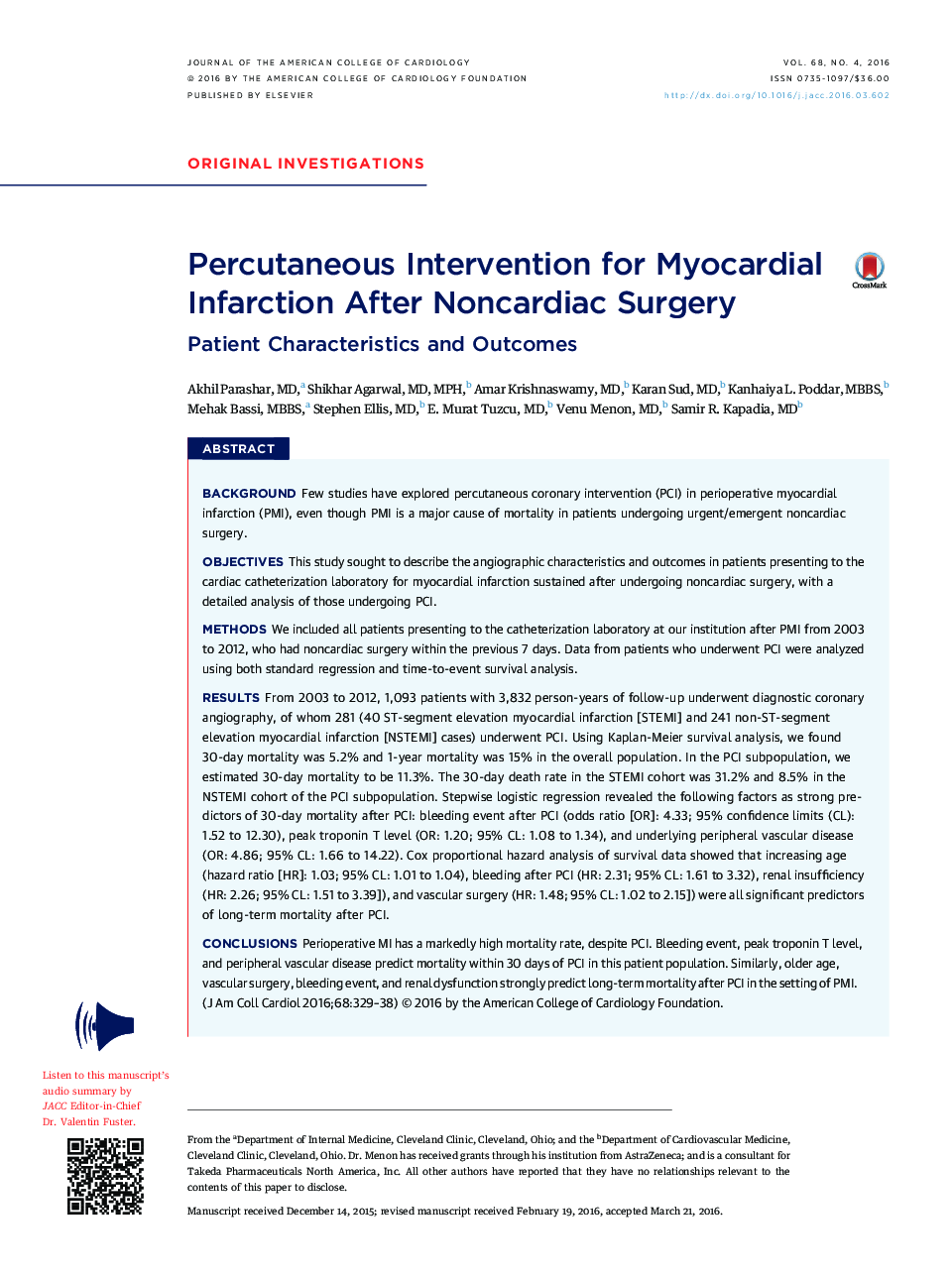| Article ID | Journal | Published Year | Pages | File Type |
|---|---|---|---|---|
| 5981472 | Journal of the American College of Cardiology | 2016 | 10 Pages |
BackgroundFew studies have explored percutaneous coronary intervention (PCI) in perioperative myocardial infarction (PMI), even though PMI is a major cause of mortality in patients undergoing urgent/emergent noncardiac surgery.ObjectivesThis study sought to describe the angiographic characteristics and outcomes in patients presenting to the cardiac catheterization laboratory for myocardial infarction sustained after undergoing noncardiac surgery, with a detailed analysis of those undergoing PCI.MethodsWe included all patients presenting to the catheterization laboratory at our institution after PMI from 2003 to 2012, who had noncardiac surgery within the previous 7 days. Data from patients who underwent PCI were analyzed using both standard regression and time-to-event survival analysis.ResultsFrom 2003 to 2012, 1,093 patients with 3,832 person-years of follow-up underwent diagnostic coronary angiography, of whom 281 (40 ST-segment elevation myocardial infarction [STEMI] and 241 non-ST-segment elevation myocardial infarction [NSTEMI] cases) underwent PCI. Using Kaplan-Meier survival analysis, we found 30-day mortality was 5.2% and 1-year mortality was 15% in the overall population. In the PCI subpopulation, we estimated 30-day mortality to be 11.3%. The 30-day death rate in the STEMI cohort was 31.2% and 8.5% in the NSTEMI cohort of the PCI subpopulation. Stepwise logistic regression revealed the following factors as strong predictors of 30-day mortality after PCI: bleeding event after PCI (odds ratio [OR]: 4.33; 95% confidence limits (CL): 1.52Â to 12.30), peak troponin T level (OR: 1.20; 95% CL: 1.08 to 1.34), and underlying peripheral vascular disease (OR:Â 4.86; 95% CL: 1.66 to 14.22). Cox proportional hazard analysis of survival data showed that increasing age (hazard ratio [HR]: 1.03; 95% CL: 1.01 to 1.04), bleeding after PCI (HR: 2.31; 95% CL: 1.61 to 3.32), renal insufficiency (HR: 2.26; 95% CL: 1.51 to 3.39]), and vascular surgery (HR: 1.48; 95% CL: 1.02 to 2.15]) were all significant predictors of long-term mortality after PCI.ConclusionsPerioperative MI has a markedly high mortality rate, despite PCI. Bleeding event, peak troponin T level, and peripheral vascular disease predict mortality within 30 days of PCI in this patient population. Similarly, older age, vascular surgery, bleeding event, and renal dysfunction strongly predict long-term mortality after PCI in the setting of PMI.
